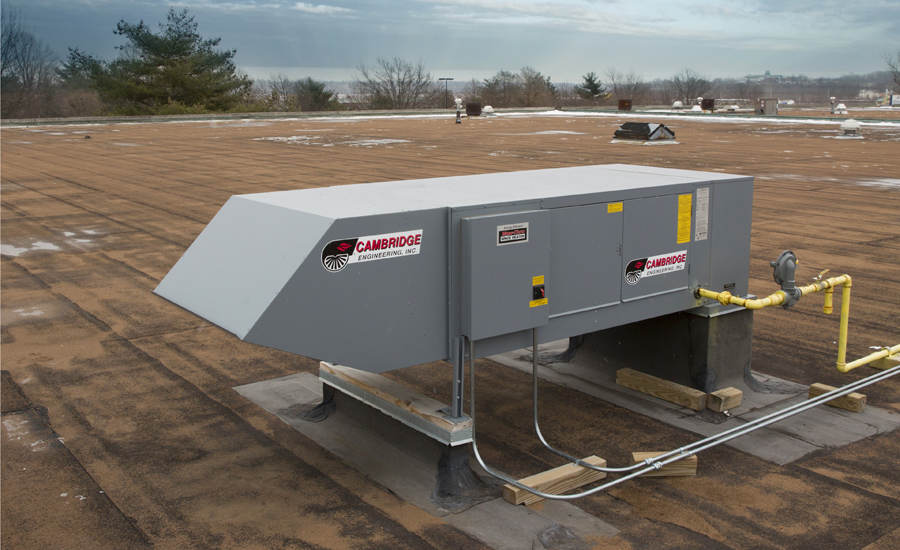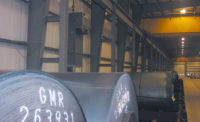When a large national retailer wanted to reduce their energy costs at one of their new distribution centers in Topeka, KS, they turned to Cambridge Engineering and their High Temperature Heating & Ventilation (HTHV) technology to help them out. The plan was to use the HTHV technology on the new facility and compare the energy costs of HTHV technology to that of a similar building utilizing standard Makeup Air Units (MAU) to heat that particular facility.
The new distribution center in Topeka, KS had nearly the exact same footprint, 1,291,950 s/f, as an existing distribution facility in Columbus, OH. The distribution centers had similar Heating Degree Days (HDD)—the Topeka location had 5,215 HDDs based at 65° F, and the Columbus location had 5,545 HDDs based at 65° F as well. Both locations had 36’ high ceilings, R-19 insulation factor in the roofs and R-10 insulation factor in the walls.
The Topeka location had 15 rooftop mounted HTHV units providing a total of 27,806 MBH of heat, and the Columbus location had 15 standard rooftop mounted MAUs providing a total of 30,315 MBH of heat. The HTHV units used a total to 95 HP for the electric motors and the MAUs used a total of 150 HP for their electrical motors. This alone meant that the MAUs would use more electricity than the HTHV units. The HTHV units also introduced fewer CFM of air into the structures. The HTHV units generated 132,340 CFM while the MAUs generated 210,000 CDFM of air.
After the first heating season was completed, the natural gas utility bills for both locations were compared, and the findings were substantial. The Topeka facility used 47% less energy than the similar facility in Columbus. And, because the HTHV technology also provides destratification, the temperature variation in the Topeka building from floor to ceiling was no greater than 11° F and the temperature variation in the Columbus facility was 28° F from floor to ceiling.



